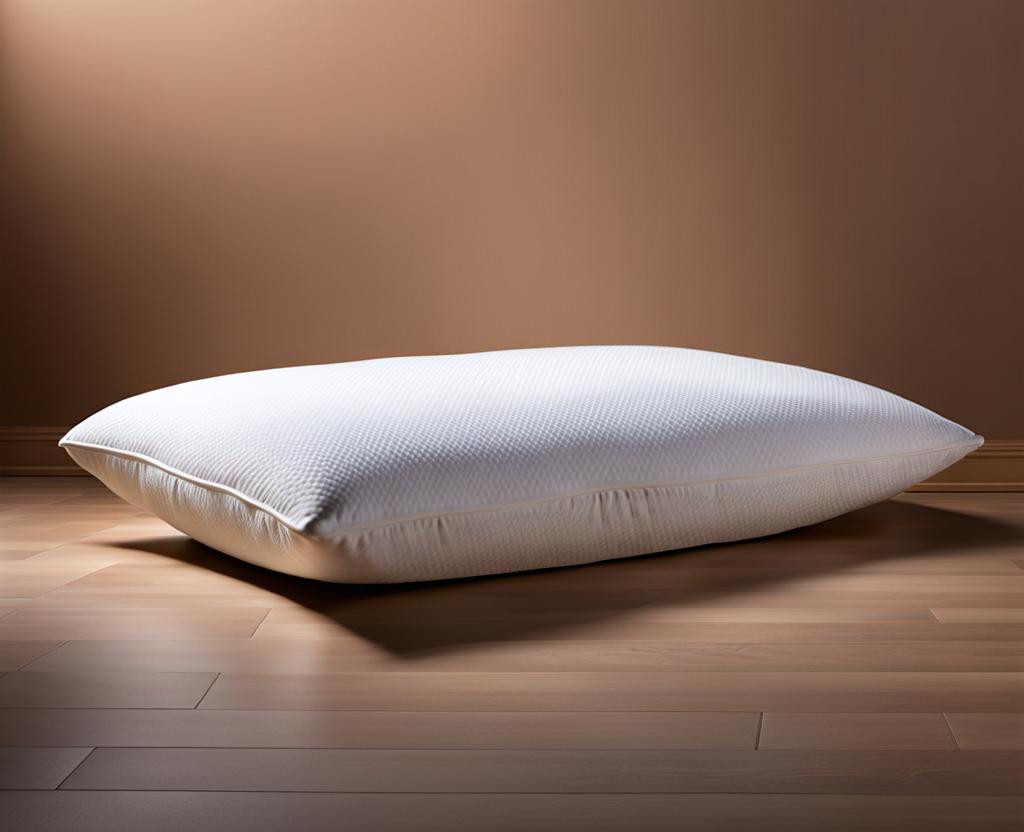You’ve heard about memory foam pillows and how they can provide superior comfort and support, but you’re not quite sure if they’re hypoallergenic. Well, you’re in the right place because in this guide, I’ll explore whether memory foam pillows are truly hypoallergenic and what that means for your sleeping experience. Let’s dive in!
What Are Memory Foam Pillows and How Do They Work?
Before we dive into the hypoallergenic aspect, let’s first understand what memory foam pillows are. These pillows are made from a viscoelastic material that conforms to the shape of your head and neck as you lie down. The foam responds to your body heat and pressure, molding itself to provide customized support and alleviate pressure points.
Memory foam pillows are known for their ability to evenly distribute your weight, reducing the strain on your neck and shoulders. This can lead to improved sleep quality and fewer aches and pains in the morning. However, the real question is whether these pillows are hypoallergenic, and that’s what we’ll explore next.

Understanding Hypoallergenic Materials: What Makes a Product Hypoallergenic?
Before we can determine if memory foam pillows are hypoallergenic, we need to understand what “hypoallergenic” means. A hypoallergenic product is designed to minimize the likelihood of triggering an allergic reaction. This is particularly important for people with allergies or sensitivities to certain materials or substances.
Hypoallergenic products are often made from materials that are less likely to harbor allergens, such as dust mites, mold, or pet dander. They are also designed to be non-irritating and free from harsh chemicals or fragrances that could cause skin irritation or respiratory issues.
It’s important to note that “hypoallergenic” is not a regulated term, and manufacturers can use it relatively freely. However, reputable brands generally follow industry standards and guidelines to ensure their hypoallergenic claims are backed by rigorous testing and quality control measures.
The Composition of Memory Foam Pillows: Exploring Their Hypoallergenic Potential
Memory foam pillows are typically made from polyurethane foam, which is a type of synthetic foam. While polyurethane itself is not inherently hypoallergenic, many manufacturers take steps to make their memory foam pillows more allergy-friendly.
Here are some factors that can contribute to the hypoallergenic nature of memory foam pillows:
- Antimicrobial properties: Some memory foam pillows are treated with antimicrobial agents that inhibit the growth of mold, bacteria, and other microorganisms that could trigger allergies.
- Dust mite resistance: Memory foam pillows are generally less hospitable to dust mites than traditional pillows made from natural fibers. The dense foam structure makes it difficult for dust mites to thrive.
- Hypoallergenic covers: Many memory foam pillows come with removable covers made from hypoallergenic materials, such as bamboo or microfiber, which can further reduce exposure to allergens.
It’s worth noting that while memory foam pillows may be more resistant to certain allergens, they can still accumulate other allergens like pet dander or human hair and skin cells over time. Regular cleaning and maintenance is crucial to maintain their hypoallergenic properties.
Factors Influencing the Hypoallergenicity of Memory Foam Pillows
While memory foam pillows can be designed to be more hypoallergenic, there are still some factors that may influence their allergy-friendliness:
Off-gassing: When new, memory foam pillows may release volatile organic compounds (VOCs) from the manufacturing process. These can potentially cause respiratory irritation or other allergic reactions in some individuals. However, off-gassing typically diminishes over time as the pillow airs out. To minimize this issue, look for pillows that are CertiPUR-US(r) certified, which ensures low VOC emissions.
Personal sensitivities: Even if a memory foam pillow is marketed as hypoallergenic, some individuals may still have sensitivities or allergic reactions to the materials used. It’s important to be aware of your personal triggers and to consult with a healthcare professional if you have concerns.
Maintenance and care: Proper care and regular cleaning of your memory foam pillow can help minimize the buildup of allergens. Follow the manufacturer’s instructions for washing and drying to ensure the pillow maintains its hypoallergenic properties. Investing in a high-quality, allergen-proof pillow cover can also help protect the pillow and extend its hypoallergenic lifespan.
Age and degradation: Over time, memory foam pillows can break down and become more porous, making them more susceptible to harboring allergens like dust mites. It’s generally recommended to replace memory foam pillows every 2-3 years to maintain their hypoallergenic qualities and ensure optimal comfort and support.
If you’ve decided to invest in a hypoallergenic memory foam pillow, here are some tips to help you make the best choice and ensure you get the most out of your purchase:
- Look for certifications: Look for pillows that are certified by organizations like CertiPUR-US(r), GREENGUARD, or OEKO-TEX(r), which test for various allergens, chemicals, and emissions.
- Consider the cover material: Choose pillows with covers made from hypoallergenic materials like bamboo, microfiber, or organic cotton.
- Read reviews: Check customer reviews to see if there are any reports of allergic reactions or off-gassing issues with a particular brand or model.
- Follow care instructions: Properly clean and maintain your pillow according to the manufacturer’s recommendations to ensure it stays hypoallergenic.
- Try before you buy: If possible, test out the pillow in person to ensure it doesn’t trigger any allergic reactions before committing to a purchase.
While memory foam pillows can be designed to be more hypoallergenic, it’s important to remember that everyone’s allergies and sensitivities are different. If you have severe allergies or concerns, it’s always best to consult with a healthcare professional before making a purchase.
By considering factors like pillow composition, certifications, and personal sensitivities, you can make an informed decision and find a hypoallergenic memory foam pillow that provides both comfort and allergy relief for a better night’s sleep.

This is where you’ll find inspiration to create a stylish and beautiful dream home.